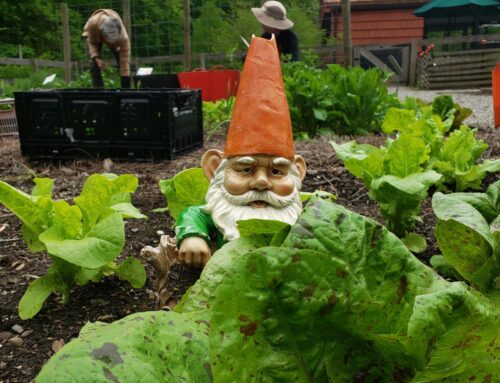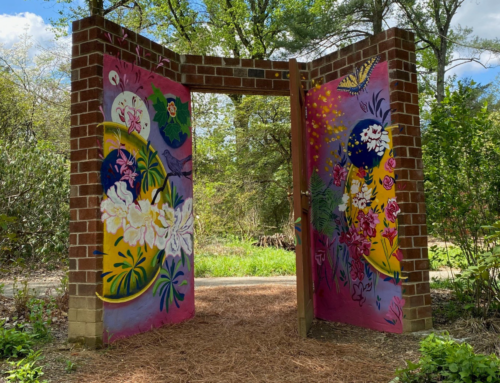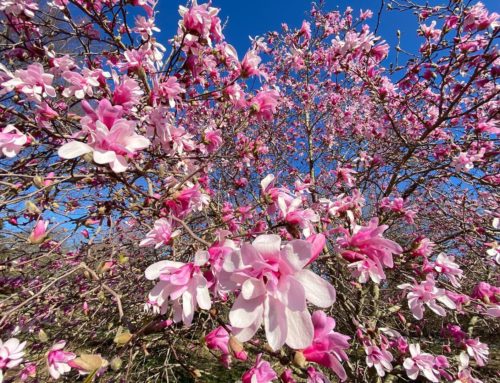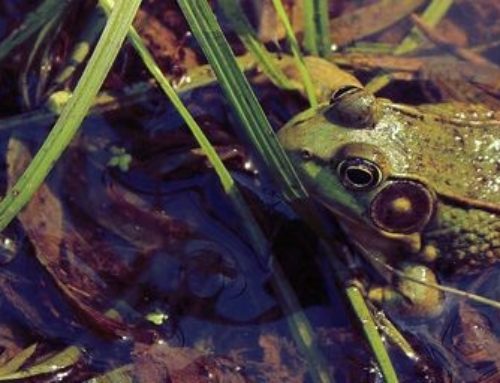“Daffodils are flowers of animation and grace, turning their faces to the sun, bowing away from the wind. Their beauty, combined with their ability to prosper and increase, often under neglect, wins them high regard. They become heirlooms, and are shared with friends.”
During this time of isolation, we need to look to nature for solace and cheer. If you are looking now, you will find hundreds of cheerful faces called daffodils or if you are botanically inclined, Narcissus. Daffodils are strongly associated with springtime, new beginnings, and hope. The daffodil has been in cultivation longer than most bulbs aside from perhaps garlic and onion. Art depicting a bunch-flowered daffodil (Narcissus tazetta) was found in Egyptian tombs dating back to 100 BC. No other spring flowering bulb has been cited in history and literature as often as the daffodil.
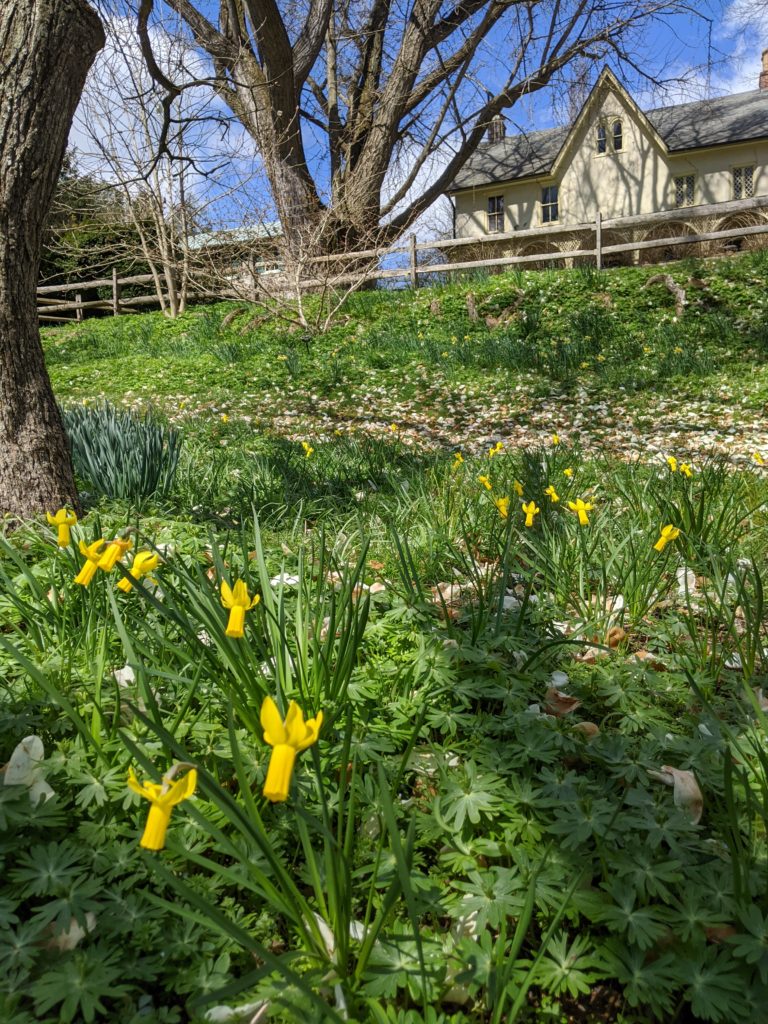
This year, they are flowering weeks earlier than usual, coinciding with this unexpected time of seclusion. Sharing some details and pictures of daffodils seems like it may help us not miss Tyler’s daffodil displays so much. What joy they bring us, their appearance providing an uplift to our spirits, knowing warmer weather and an abundance of new life is heading our way. Daffodils, along with jonquils and paperwhites in the genus Narcissus, provide us with a long season of bloom here in the northeast.
Daffodils are long lived and very diverse both in size of flowers, colors and time of appearance. Many botanists and horticulturists have spent a lifetime breeding and categorizing them. While some may think daffodils are too monochromatic, the trumpet shaped cup could be red, a pinkish apricot, or orange. Bulb catalogs give us lots of choices in flower size, color and shape, and in bloom time. Time spent choosing bulbs for next spring’s garden is something to look forward to each autumn season.
At Tyler, we first see a few daffodils pushing up in late winter just outside the visitor center, and many below Lachford Hall. A bit later, a wide swath of solid white daffodils begins to emerge in the lawn among the magnolias and in beds surrounding the parking lot, carpeting under shrubs. Then the Stopford Family Maze and nearby meadow is nearly a solid sea of white and yellow, with so many daffodils dancing in the breeze. Even if your intention is to remain on the paved scenic route, you find yourself drawn to the hundreds of flowers brightening the entire area. Sitting on a bench with a book in the midst of all this beauty is time well spent. But who planted Tyler’s bulbs, and when? While we can’t be certain, we suspect that some of the bulbs in the maze were planted soon after the maze was completed in 1998.
“What a wealth of bloom and beauty … For a number of years, I had in my Philadelphia garden daffodils in bloom from the middle of March to the middle of May. Most of the bloom, of course, came between April 20 and the first week of May.”
Since becoming a public garden in 1944, bulbs, and especially daffodils, began to be planted in large numbers at Tyler. During Dr. John C. Wister’s first 10 years as Director of Tyler Arboretum (1946-1955), over 34,000 bulbs were planted 20,000 of which were daffodils. Many daffodils were planted at the original entrance to Tyler. If you visit the Fragrant Garden, proceed on the path above and you will notice the former entrance columns. During this time, Dr. Wister’s future wife, horticulturist Gertrude Smith, was already working with him at Tyler, with bulbs being one of her great interests. She is quoted as saying “The flowers of late winter and early spring occupy places in our hearts well out of proportion to their size.”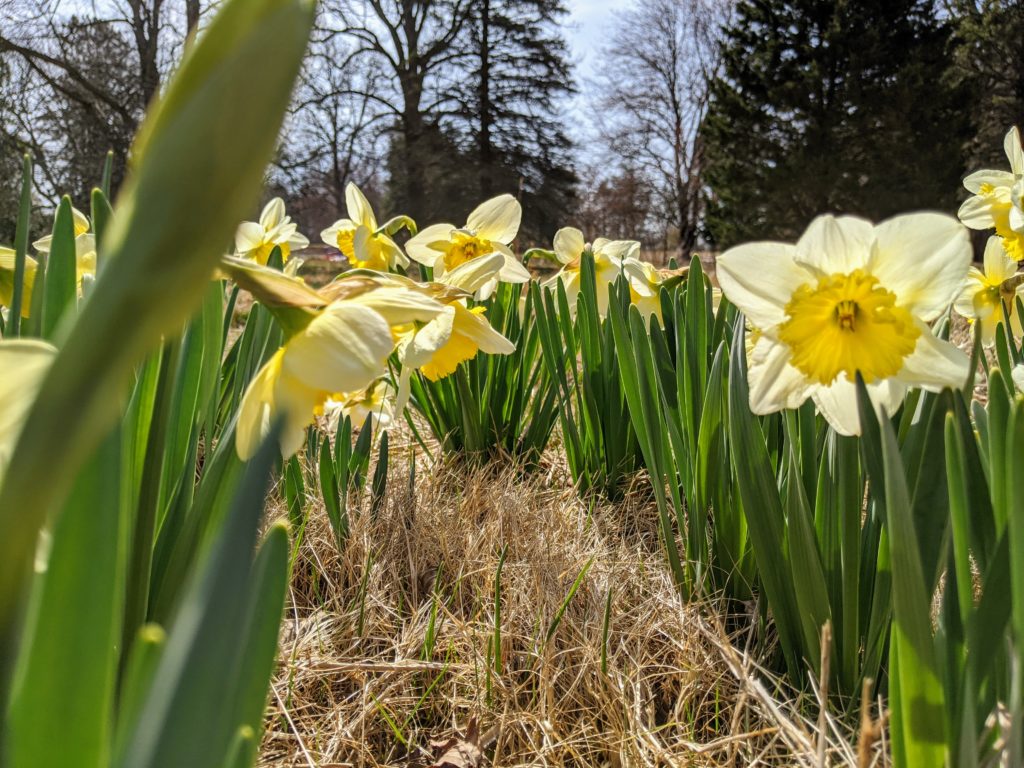
In both her articles and her book titled Hardy Garden Bulbs, Gertrude Smith Wister’s love for bulbs is easily recognizable. In one article written in 1974 for the New York Times, she talks about the “several hundred kinds of daffodils” growing in their suburban Philadelphia garden. She writes that daffodils and other bulbs bloom nearly the whole year through, late January through October. Gertrude dedicates a good portion of the article to daffodils, what she calls “old established varieties,” which she names and describes for us, stating she gets about 10 weeks of daffodils in bloom each season. How impressive! Even though these were considered ‘old’ varieties in 1974, she describes white and yellow daffodils; orange, pink, and yellow perianths; early tiny species, and late fragrant varieties. If you’d like to review the entire article and perhaps search for some of these older varieties for your own garden.
Dr. Wister was a member in more than 50 nature and horticultural societies, including the American Daffodil Society (ADS). In 1985, this organization began presenting the “John and Gertrude Wister Award” to an outstanding daffodil, judging it in seven different characteristics. The website for the ADS is full of information about growing, dividing, and forcing daffodils. It also includes information on diseases and pests among many other topics. For more information on the society, daffodils and the Wister award.
While pictures can’t replace being at Tyler for the annual spring display, we do hope they help us not miss the daffodils quite so much. Please feel free to share your pictures of your favorite harbinger of spring with us #TylerHarbinger.


